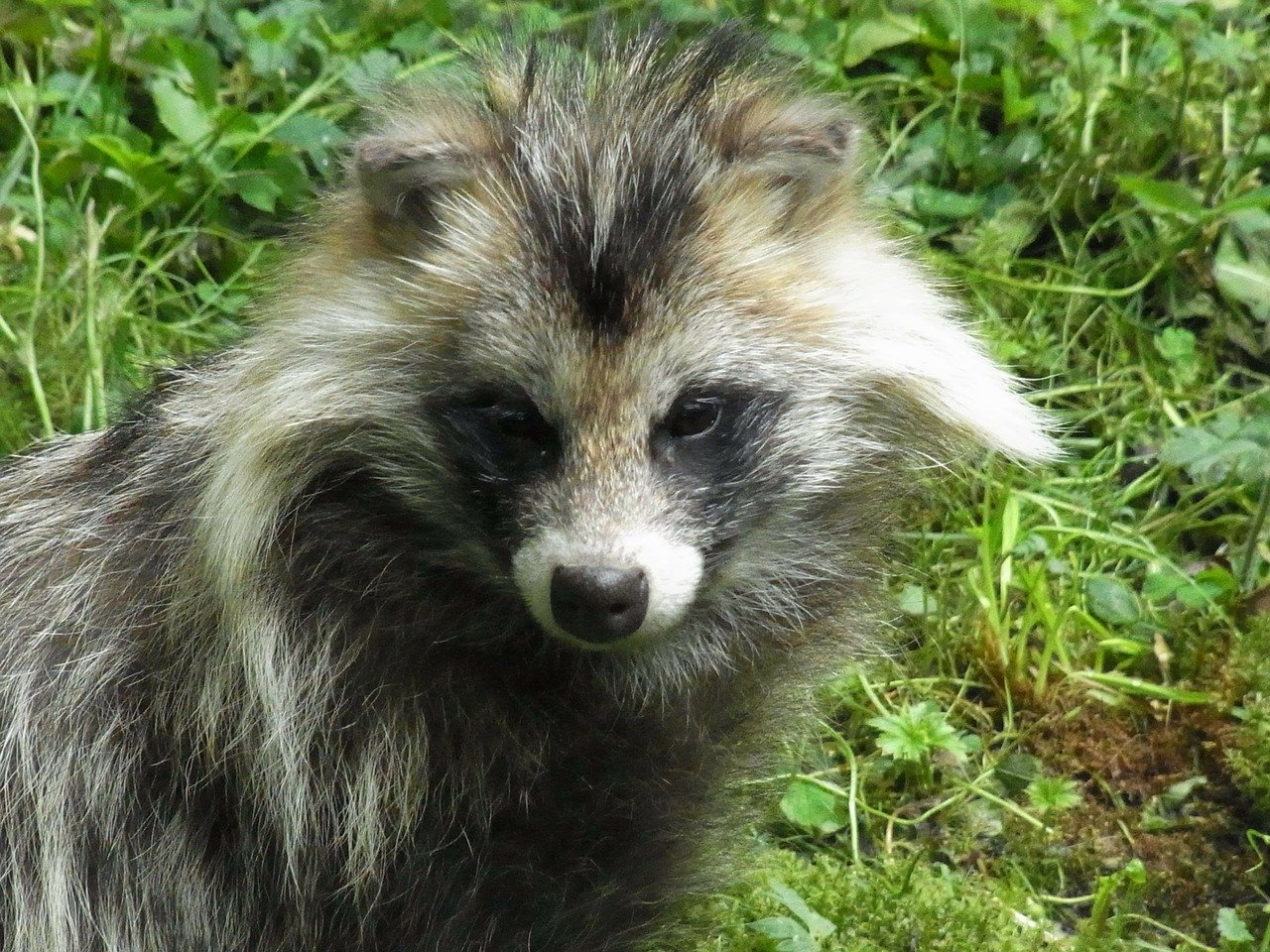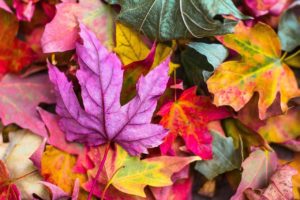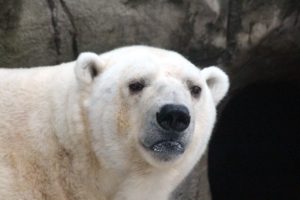반려동물 있어요? balyeodongmul isseoyo? Do you have any pets?
People keep all sorts of animals as pets, but the most common ones are 개 gae a dog, 고양이 koyangi a cat, 금붕어 geumbungeo a goldfish, 앵무새aengmusae a parrot, 햄스터 haemseuteo a hamster. Two animals that aren’t usually pets but that you can often find in or around buildings are: 생쥐 saengjwi a mouse, 쥐 jwi a rat.
- 개와 고양이가 있어요.
gaewa goyangi-ga isseoyo.
We have a dog and a cat. - 개의 / 고양이의 이름이 뭐예요?
gae-e / goyangi-e ireum-i mwoyeyo?
What’s your dog’s/cat’s name?
- 우리 강아지랑 놀고 있어요.
uri gangajilang nolgo isseoyo.
I’m playing with our puppy. - 우리 새끼 고양이를 쓰다듬고 있어요.
uri saekki goyangi-reul sseudadeumgo isseoyo.
I’m petting our kitten. - 개는 물어요?
gae-neun muleoyo?
Does your dog bite? - 고양이는 할퀴어요?
goyangi-neun halkwieoyo?
Does your cat scratch? - 어항에 금붕어를 가지고 있어요.
eohang-e geumbungeo-reul gajigo isseoyo.
I have a goldfish in a fishbowl. - 수족관에 물고기를 가지고 있어요.
sujoggwan-e mulgogi-reul gajigo isseoyo.
I have a lot of fish in an aquarium. - 우리 안에 햄스터 두 마리를 가지고 있어요.
uri an-e haemseuteo du mari-reul gajigo isseoyo.
We have two hamsters in a cage. - 앵무새는 말을 많이 해요.
aengmusae-neun mal-eul mani haeyo.
My parrot talks a lot. - 생쥐를 봤을 때 소리를 질렀다.
saengjwi-reul bwass-eul ttae sori-reul jilleotda.
I screamed when I saw a mouse. - 그것은 생쥐가 아니야, 이것은 쥐야!
geugeos-eun saengjwi-ga aniya, igeos-eun jwiya!
That’s not a mouse, it’s a rat!
개는 무슨 소리를 내요? gae-neun museun sori-reul naeyo? What sound does a dog make?
In English, dogs say “woof” and cats say “meow,” but of course that’s all different in Korean.
- 개는 ‘멍 멍’ 하고 짓는다.
gae-neun ‘meong meong’ hago jineunda.
A dog says “Woof!” - 고양이는 ‘야옹’ 하고 운다.
goyangi-neun ‘yaong’ hago unda.
A cat says “Meow!” - 새는 ‘짹 짹’ 하고 지저귄다.
sae-neun ‘jjaeg jjaeg’ hago jijeogwinda.
A bird says “Tweet!” - 소는 ‘음메’ 하고 운다.
so-neun ‘eumme’ hago unda.
A cow says “moo.” - 수탉은 ‘꼬꼬댁’ 하고 운다.
sutag-eun ‘kkokkodaeg’ hago unda.
A rooster says “cock-a-doodle-do.” - 오리는 ‘꽥꽥’ 하고 운다.
ori-neun ‘kkwaegkkwaeg’ hago unda.
A duck says “quack.” - 돼지는 ‘꿀꿀’ 하고 소리낸다.
dwaeji-neun ‘kkulkkul’ hago sorinaenda.
A pig says “oink oink.” - 개는 화나면 으르렁 거린다.
gae-neun hwanamyeon euleuleong geolinda.
Dogs growl when they’re angry. - 고양이는 행복하면 그르렁 거린다.
goyangi-neun haengboghamyeon geuleuleong geolinda.
Cats purr when they’re happy.
농장에서 nongjang-eseo: On the Farm
The most usual animals on a farm are: 말 mal a horse, 암소, 젖소 amso, jeotso a cow, 황소 hwangso a bull, 돼지 dwaeji a pig, 양 yang a sheep, 닭 dag a chicken, 암탉 amtag a hen, 수탉 sutag a rooster,거위 geowi a goose, 염소 yeomso a goat, 당나귀 dangnagwi a donkey.
- 말이 초원을 달리고 있다.
mal-i chowon-eul dalligo itda.
The horse is running in the pasture. - 소들이 외양간에 있다.
sodeul-i oeyang-gan-e itda.
The cows are in the barn. - 돼지들이 진흙에 누워있다.
dwaejideul-i jinheulg-e nuwoitda.
The pigs are lying in the mud. - 닭들이 닭장 안에 있다.
dalgdeul-i dalgjang an-e itda.
The chickens are in the coop. - 농부가 우유를 짠다.
nongbu-ga uyu-reul jjanda.
The farmer milks the cows. - 닭이 알을 낳는다.
dalg-i al-eul nahneunda.
Chickens lay eggs. - 털실은 양에서 나온다.
teolshil-eun yang-eseo naonda.
Wool comes from sheep.
Some other words related to animals that you want to know are: 털 teol fur, (물고기) 비늘 (mulgogi) bineul (fish) scales, 꼬리 kkoli a tail, 발굽 balgub a hoof, 뿔 ppul a horn, 깃털 gitteol a feather, 갈기 galgi a mane, 발톱 baltob a claw.
- 말은 아름다운 갈기가 있다.
mal-eun aleumdaun galgiga itda.
The horse has a beautiful mane. - 거위는 하얀 깃털이 있다.
geowi-neun hayan giteol-i itda.
The goose has white feathers. - 황소는 뿔이 있다.
hwangso-neun ppul-i itda.
Bulls have horns. - 돼지는 작은 꼬리가 있다.
dwaeji-neun jag-eun kkoli-ga itda.
The pig has a little tail. - 어떤 동물들이 발굽을 가지고 있어요?
eotteon dongmuldeul-i balgub-eul gajigo isseoyo?
Which animals have hooves? - 조심해요! 그 고양이는 발톱이 날카로워요.
joshimhaeyo! geu goyang-ineun baltob-i nalkalowoyo.
Be careful! The cat has sharp claws.
새 sae: Birds
Here’s some vocabulary for our feathered friends: 새 sae a bird, 오리 ori a duck, 독수리 dogsuli an eagle, 매 mae a hawk, 비둘기 bidulgi a pigeon, 칠면조 chilmyeonjo a turkey, 공작 gongjag a peacock, 백조 baegjo a swan, 올빼미, 부엉이 olppaemi, bueongi an owl, 갈매기 galmaegi a seagull.
- 새 소리 들려요?
sae soli deullyeoyo?
Do you hear the birds? - 호수 옆에 오리들이 있어요.
hosu yeop-e orideul-i isseoyo.
There are some ducks next to the lake. - 독수리는 매우 높이 날아요.
dogsuli-neun maeu nop-i nalayo.
Eagles fly very high. - 공작새는 아름다운 깃털을 가지고 있어요.
ongjagsae-neun aleumdaun giteol-eul gajigo isseoyo.
Peacocks have beautiful feathers. - 공원에 비둘기가 많이 있어요.
gongwon-e bidulgi-ga mani isseoyo.
There are a lot of pigeons in the park. - 백조는 매우 우아한 동물이에요.
baegjo-neun maeu uahan dongmul-ieyo.
Swans are very elegant animals. - 부엉이가 숲에서 울고 있어요.
bueongi-ga sup-eseo ulgo isseoyo.
An owl is hooting in the woods. - 갈매기들이 해변 위를 날고 있어요.
galmaegideul-i haebyeon wireul nalgo isseoyo.
The seagulls are flying over the beach.
야생 동물 yasaeng dongmul: Wild Animals
The most common wild animals around the world are these: 사슴 saseum a deer, 곰 gom a bear, 늑대 neugdae a wolf, 여우 yeou a fox, 코요테 koyote a coyote, 너구리 neoguli a raccoon dog, a kind of fox native to Korea (see image), 다람쥐 daramjwi a squirrel, 토끼 tokki a rabbit, 박쥐 bagjwi a bat, 뱀 baem a snake, 도마뱀 domabaem a lizard.
- 사슴이 들에서 풀을 먹고 있어요.
saseum-i deul-eseo pul-eul meoggo isseoyo.
The deer are eating grass in the field. - 여우가 숲으로 뛰어 들어갔어요.
yeouga sup-eulo ttwieo deuleogasseoyo.
A fox ran into the woods. - 하이킹 할 때 곰을 봤어요.
haiking hal ttae gom-eul bwasseoyo.
We saw a bear when we were hiking. - 늑대들은 밤에 울부짖어요.
neugdaedeul-eun bam-e ulbujijeoyo.
Wolves howl at night. - 다람쥐는 매우 빨리 나무에 올라가요.
dalamjwi-neun maeu ppalli namu-e ollagayo.
Squirrels climb trees very quickly. - 여기 너구리 있어요?
yeogi neoguli isseoyo?
Are there raccoon dogs here? - 박쥐는 일몰 후에 나와요.
bagjwi-neun ilmol hue nawayo.
Bats come out after sunset. - 조심해요! 길에 뱀이 있어요.
josimhaeyo! gil-e baem-i isseoyo.
Be careful! There’s a snake on the path.
동물원에서 dongmulwon-eseo: At the Zoo
Depending on where you live, you may not need to go to a zoo to see these animals. But for most of us, a zoo is the only place where we’ll see these: 코끼리 kokkili an elephant, 사자 saja a lion, 호랑이 holangi a tiger, 기린 gilin a giraffe, 얼룩말 eollungmal a zebra, 코뿔소 koppulso a rhinoceros, 원숭이wonsungi a monkey, 고릴라 gorilla a gorilla, 하마 hama a hippopotamus.
- 코끼리는 코와 긴 상아를 가지고 있어요.
kokkili-neun kowa gin sanga-leul gajigo isseoyo.
Elephants have trunks and long tusks. - 사자는 포효하고, 으르렁거려요.
sajaneun pohyohago, euleuleong-geolyeoyo.
Lions roar and snarl. - 호랑이는 줄무늬를 가지고 있어요.
holangi-neun julmunui-reul gajigo isseoyo.
Tigers have stripes. - 기린은 아주 긴 목을 가지고 있어요.
gilin-eun aju gin mog-eul gajigo isseoyo.
Giraffes have very long necks. - 얼룩말은 흑백 줄무늬를 가지고 있어요.
eollugmal-eun heugbaeg julmunui-reul gajigo isseoyo.
Zebras have black and white stripes. - 코뿔소는 매우 큰 뿔을 가지고 있어요.
koppulso-neun maeu keun ppul-eul gajigo isseoyo.
Rhinos have very big horns. - 원숭이는 많은 시간을 나무에서 보내요.
wonsung-ineun man-eun shigan-eul namu-eseo bonaeyo.
Monkeys spend a lot of time in trees. - 고릴라는 사람과 매우 비슷해요.
golilla-neun salamgwa maeu biseushaeyo.
Gorillas are very similar to people. - 하마는 매우 빨리 달려요.
hama-neun maeu ppalli dallyeoyo.
Hippos run very fast!
물속에 mulsog-e: In the Water
If you live near a lake or river, you may see some of these: 물고기 mulgogi a fish, 개구리 gaeguli a frog, 거북이 geobugi a turtle, 비버 bibeo a beaver, 달팽이 dalpaengi a snail, 엘리게이터 elligeiteo an alligator, 악어 ageo a crocodile.
- 이 호수에는 어떤 종류의 물고기가 살아요?
i hosu-e-neun eotteon jonglyuui mulgogia salayo?
What kind of fish live in this lake? - 저 바위에 거북이가 있어요.
jeo bawi-e geobugi-ga isseoyo.
There’s a turtle on that rock. - 여름 밤에 개구리 소리를 들어요.
yeoleum bam-e gaeguli soli-leul deuleoyo.
We hear frogs at night in the summer. - 달팽이는 아주 천천히 움직여요.
dalpaengi-neun aju cheoncheoni umjig-yeoyo.
Snails move very, very slowly. - 비버는 나무를 씹고 댐을 만들어요.
bibeo-neun namu-leul ssibgo daem-eul mandeuleoyo.
Beavers chew trees and make dams. - 그것은 엘리게이터예요 아니면 크로커다일이에요?
geugeos-eun elligeiteoyeyo animyeon keulokeodail-ieyo?
Is that an alligator or a crocodile?
In the ocean, you may see: 상어 sangeo a shark, 고래 gorae a whale, 돌고래 dolgorae a dolphin, 게 ge a crab, 바닷가재 badatgajae a lobster, 해파리 haepari a jellyfish, 불가사리 bulgasari a starfish, 성게 seongge a sea urchin, 장어 jangeo an eel, 조개 jogae a clam, 홍합 honghab a mussel, 새우 saeu a shrimp, 문어 muneo an octopus, 오징어 ojingeo x a squid.
- 상어가 무서워서 바다에서 수영 안해요.
sangeo-ga museowoseo badaeseo suyeong anhaeyo.
I’m afraid of sharks, so I don’t swim in the ocean! - 해변 근처에서 헤엄치는 돌고래를 봤어요.
haebyeon geuncheo-eseo heeomchi-neun dolgolae-reul bwasseoyo.
We saw dolphins swimming near the beach. - 오늘 수영 안해요. 해파리가 너무 많아요.
oneul suyeong anhaeyo. haepali-ga neomu manayo.
We’re not swimming today. There are too many jellyfish. - 해변에서 불가사리를 찾았어요.
haebyeon-eseo bulgasali-reul chajasseoyo.
We found a starfish on the beach. - 아야! 나는 성게를 밟았어요. 아파요!
aya! naneun seongge-reul balbasseoyo. apayo!
Ouch! I stepped on a sea urchin. That’s painful! - 바위 근처에 게가 많아요.
bawi geuncheo-e ge-ga manayo.
There are a lot of crabs near the rocks. - 조개는 모래 속에 살아요.
jogae-neun molae sog-e salayo.
Clams live in the sand. - 홍합은 바위에서 살아요.
honghab-eun bawi-eseo salayo.
Mussels live on rocks.
곤충과 다른 작은 생물들 gonchung-gwa daleun jageun saengmuldeul: Insects and Other Small Creatures
If you every need to talk about insects, bugs, or other creep-crawlies, you will need to know these: 곤충 gonchung a bug, 거미 geomi a spider, 벌 beol a bee, 개미 gaemi an ant, 딱정벌레 ttagjeongbeolle a beetle, 무당벌레 mudangbeolle a ladybug, 파리 pali a fly, 모기 mogi a mosquito, 나비 nabi a butterfly, 나방 nabang a moth, 벌레 beolle a worm, 전갈 jeongal a scorpion.
- 곤충들이 싫어요!
gonchungdeul-i shileoyo!
I don’t like bugs! - 내 침실 벽에 큰 거미가 기어 다녀요.
nae chimshil byeog-e keun geomi-ga gieo danyeoyo.
There’s a big spider crawling on the wall in my bedroom! - 모기들이 오늘밤 나를 물어요.
mogideul-i oneulbam na-reul mul-eoyo.
The mosquitos are biting me tonight. - 벌에 쏘였어요!
beol-e ssoyeosseoyo!
I was stung by a bee! - 나비는 아름답고 다채로워요.
nabi-neun aleumdabgo dachaelowoyo.
Butterflies are beautiful and colorful. - 나방은 밤에 불빛 주위를 날아요.
nabang-eun bam-e bulbich juwi-reul nalayo.
Moths fly around lights at night. - 벌레는 흙에서 살아요.
beolle-neun heulg-eseo salayo.
Worms live in the soil. - 무당벌레는 검붉어요.
mudangbeolle-neun geombulg-eoyo.
Ladybugs are black and red. - 조심해요! 여기 전갈이 있어요.
joshimhaeyo! yeogi jeongal-i isseoyo.
Be careful! There are scorpions here.
Learn Korean with the Language Garage
Check out our other posts on Korean language, culture, and more. And if you’re looking for convenient and affordable live Korean lessons with a real teacher, check out The Language Garage. Our lessons are given online in a virtual classroom, so it doesn’t matter where you live or work – we can come to you. And we have flexible options, with a free trial so that you can decide if there’s a fit. Check us out!
Free Student Book and Audio
You can access our original student book and practice audio here. If you’d like to use it with an instructor, you can enroll in lessons. Or you can use it on your own as self-study, totally free. Enjoy!
Image by Harald Matern from Pixabay.




